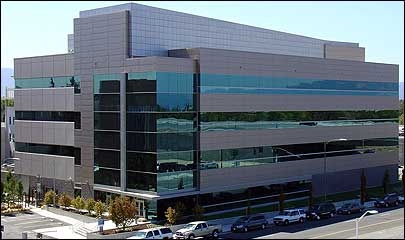Nov 05, 2008In a new California crime lab, passive RFID tags will help dozens of professional crime solvers track all sorts of evidence—from DNA to computers to handguns to cars—as they are processed, tested and analyzed.
The $75.5 million, 90,000-square-foot building, being built by the Santa Clara County government, is replacing the county's current crime lab. The existing lab, composed of three separate sites, has relied on aging bar-code and information systems to track and manage approximately 35,000 to 40,000 pieces of evidence annually.
The new facility include not only a firing range, a clean room for computer forensics and tools for analyzing mitochondrial DNA, but also an EPC Gen 2 RFID system consisting of Alien Technology's Squiggle RFID tags, to be affixed to evidence, and seven Alien ALR-9650 RFID interrogators positioned within the property room, on each of the lab's four floors, as well as near elevator doors on the second, third and fourth floors. All evidence that enters the building gets logged in at the first-floor property room, then remains in that location until requested by staff on the upper floors.
Property officers move the evidence to an upper-level property room, and readers at the elevators document that movement. When lab technicians in an upper-level property room check evidence in or out, the room's RFID reader documents that action. The lab will employ two models of RFID tags, which can withstand the freezing temperatures of cold storage: a smaller tag (the ALN-9540 Squiggle) for evidence such as blood vials, and a larger model (the ALN-9562 Squiggle-SH) for containers or plastic bags holding all other evidence.
Until now, the lab's staff has attached an adhesive paper label—printed with a unique bar-coded identification number—to a bag or container holding each piece of evidence. The crime lab expects that the RFID system will make it easier to locate evidence as it is being processed, and also provide a more thorough documentation of each item's chain of custody.
"The bar-code system has worked well for us," says Benny Del Re, director of the Santa Clara Crime Lab. But Del Re notes that bar-coding was prone to errors. In some instances, for example, when evidence was checked out for testing, employees would forget to manually scan the bar code to document that movement. "We are just trying to find a way of speeding up our process from admitting evidence to tracking that evidence," he says. "With RFID, we are taking things to the next level."
In addition, a bar code will be affixed to the evidence that includes a case number for that particular item (one case number might represent numerous pieces of evidence, but each item has a unique identifier via the RFID tag). Derivative pieces will also get their own RFID tags. A DNA swab taken of a gun's surface, for example, will be fitted with an RFID tag, as well as a bar-code label printed with the same case number as the gun's.
Whenever a criminologist removes a piece of evidence from a property room, the RFID interrogator automatically captures the unique ID number, and a nearby wall-mounted computer pulls up the evidence in LIMS. The criminologist uses a bar-code reader to scan his or her ID badge (which has a bar-coded number that identifies that individual) and enters in any pertinent information. If an employee fails to scan the bar code on his or her badge, Del Re says, the terminal will sound an alarm and LIMS will record that no worker ID badge number was captured. The same process is repeated when the employee returns the evidence to the property room.
According to Del Re, the lab plans to make LIMS available to local law enforcement agencies so they can check the status of evidence. In addition, the agencies can enter basic information about evidence before bringing it to the lab where it is received. At some point, local agencies may be provided with RFID tags to affix to the items ahead of time.
The RFID system is expected to go live in the next month, though the lab will continue to use the bar-code labels for the foreseeable future. "The bar codes add some redundancy," Del Re says. "But as time goes on, as we become more comfortable with RFID tags, we may find that we don't need bar-coding. For right now, though, it's for our peace of mind."


